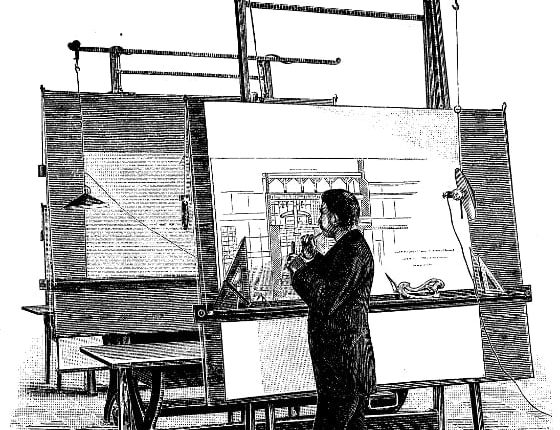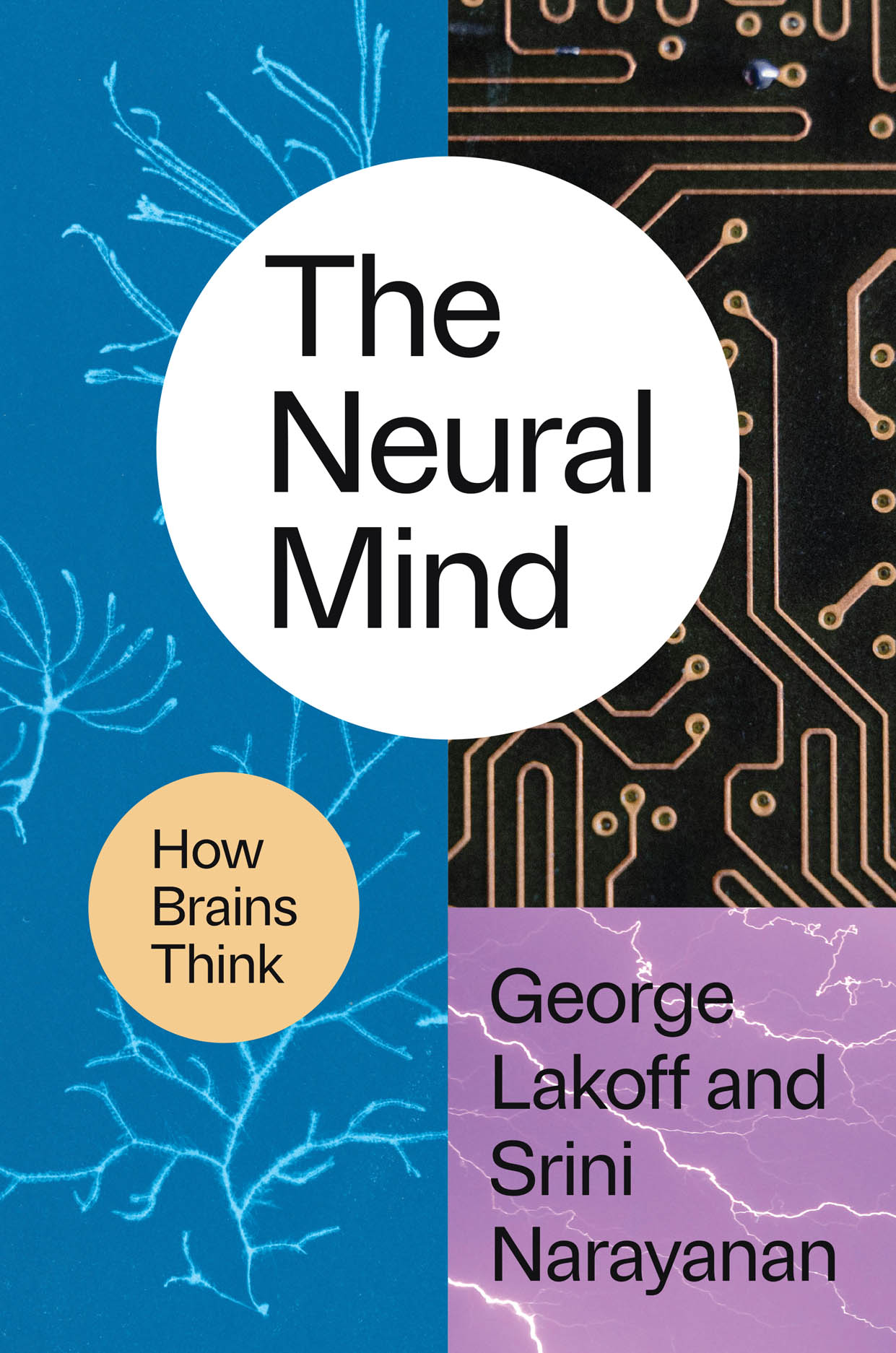
Is Architecture a Language? No. It’s Like Language
George Lakoff is a linguist, cognitive scientist, and popular author who spent his career at the University of California at Berkeley, including the creation of two major laboratories. His research has been wide ranging and fruitful, though sometimes so eclectic that critics have called him a mere gadfly. Yet he has persisted, undaunted, working for decades with computer scientists, biologists, philosophers, and sociologists. His graduate students have become major figures in multiple disciplines. His most recent book, written with Srini Narayanan, may be his most provocative: The Neural Mind (University of Chicago Press).
When I was in graduate school, everyone was talking about semiotics, Chomskian linguistics, and structuralism. A 1970 collection of essays, Meaning in Architecture, was on everyone’s reading list (along with Collage City, The Architecture of the City, and Learning From Las Vegas). In it, Charles Jencks (the book’s editor), George Baird, and others made the case that architecture could be understood as a language, one in which buildings spoke through symbols, signs, and ornamental features. You could understand their language if you had the code, or the grammatical principles, that made it work. It made perfect sense that, as knowledge about linguistics was advancing, architects might relate such advances to their own discipline. Semiology, the study of signs, was also a hot discipline, following the discoveries of George Sanders Pierce and Fernand Saussure. Umberto Ecco encouraged architects to read not only his work but that of other literary critics like Roland Barthes and Michel Foucault, so we did.
One result of this fascination with meaning and symbols was the Postmodern fixation on ironic takeoffs of “historical” motifs in classical and traditional buildings. Charles Moore made the biggest splash with his metallic take on the Trevi Fountain in New Orleans, a work that was quite popular with people but found little support among critics. The Piazza d’Italia is still with us, but a host of other Moore buildings have been demolished recently, as Postmodernism continues to suffer unfairly from post-DeCon criticism. Apparently, quoting from the past to create a reference or tell a joke is still off limits for modern architects, though their predecessors used wit and irony all the time. There isn’t much humor in contemporary buildings; their metaphors are gravely serious.
Images and metaphors are the stuff of all spoken languages, and in texts these things can be analyzed to assess aspects of thinking. Lakoff and Narayanan believe they have found the relationship between cognition in the brain, at the level of its neurons, and metaphorical language as it exists throughout the world. The level of their success will be debated for years to come, but one aspect of their discoveries answers questions raised by Meaning in Architecture and many other books: How is architecture—an expression of both individual creativity and cultural symbols—like a language? And whether or not that is the case, how might artificial intelligence be useful in creating a better built environment?

The authors use metaphor as the overarching theme not only of their book but of a new theory of how thinking works. They stress that in embodied cognition, the environment, the body, and the brain are continuously connected not only in conscious life but in our unconscious as well. As we negotiate our environment, we also bring memories to play on our thoughts, and those memories engage with our imagination when we do creative things, like dancing and drawing.
The Neural Mind reflects my own research when it cites the pioneering work of Martha Farah on images and perception. She notes that when artists imagine their works and perceive their subjects, they do so according to habitual schemas and media that are “painterly” or “sculptural” (to use to examples) in their preferred manner of working. Concepts and percepts are the same in their minds. And most conceptual thinking employs metaphors: one thing being like another, or compared to it. Imagining a building to be like a mountain brings powerful ideas to mind. Metaphors aren’t just abstract—they reflect the reality of the lived environment, including buildings.
Lakoff and Narayanan take this discovery and others well beyond their simple confines, expanding them to explain many aspects of the mind. As they write, “complex metaphorical thought shows up not just in language but also in gesture, imagery (paintings, movies, dance, etc.), mathematics, science, and moral and political ideology.” It is everywhere, even in architecture.
The great leap in The Neural Mind occurs when the authors attempt to connect their theory of metaphor to the complex operations of the brain itself, to the structure and organization of cognition. They refer to how the brain “maps” aspects of reality in its functional regions and among its chemical circuits. They use computer models to test hypotheses about what these circuits do and how they organize thought and behavior. They take early models of metaphorical cognition, and the linguistic concepts in those models, across disciplines to help explain how the logic of thinking works across both large and small networks or processes. In the final chapter, on “neural language,” they bring their discoveries into focus and outline new research that can advance it beyond a hypothesis. In so doing, they introduce a few useful terms that architects have also employed in their creative thinking: syntax, schema, tuning, frame, and concept, among others.
The two most important are schema, a conceptual mode of thinking that defines how artists imagine and design; and frame, a broader term that describes the parameters and limits that artists must use to choose and focus in on their subjects. These artistic terms are fairly well defined by Ernst Gombrich in his classic book, Art and Illusion. They have also been employed by architectural theorists—in particular, Jencks and Baird in the 1970s.
“Frames are not isolated,” Lakof and Narayanan write. “They take part in whole systems of thought. … frames are composed of primary embodied schemas and complexes of them.” Significantly, frames have part-whole structures and relationships that track closely with architectural form and composition. One example will help explain how. The “commercial event” frame is a familiar one for all humans: someone sells an item to a buyer, exchanging one thing for something else. Specific words describe actions in the frame: buy, sell, cost, and price. Specific semantic roles in the frame are the buyer, the seller, the goods, and money. There are three stages in a typical transaction: (1) the buyer wants the goods and has the money; (2) a transfer occurs between two agents, money from buyer to seller, goods from seller to buyer; (3) the buyer had the goods, the seller the money. Similar relations and actions occur between architects and their clients. There is a building design frame, and a building construction frame.

I cannot explain The Neural Mind in a short review, but let me stress that the authors outline their new theory concisely and completely in this relatively short, dense text. My book on the history of architectural design talks in some detail about how modes of conception, or schemas, work in a typical architectural problem, and how architects have employed these methods for designing starting in the Renaissance. I do not use the word frame, but one can extrapolate the ways in which problems are “framed” when thinking about how architectural design—indeed, any creative endeavor—works. Painters, poets, and composers use schemas and frames in much the same way architects do. But their media, their languages, are different.
The forms and spaces in buildings do not conform to any other medium: not to spoken or written language, not to dance or music, not even to sculpture. They must function in the social sphere. They do reflect human thought and action. So they are like language, the most powerful means of thought and external communication available to our species. The Neural Mind offers the best explanation of these distinctions in the current literature, both scientific and humanistic.
In an appendix, the book also provides a persuasive answer to those who are wondering where the limits are in the current arena of speculation about AI and large language models when it comes to architecture and design. The authors suggest that AI researchers stop trying to mimic the structure of real human thought using their programs, but instead employ them to find solutions to pressing problems in medicine, business, economics, and hard science. I implore them to do the same when it comes to building design and architecture. Humans think in unique ways that cannot be replicated by machines of any kind. Let us continue to do what we do best: design beautiful buildings and environments. There are, however, wonderful avenues for using AI to help us answer difficult questions, such as what kinds of environments people generally like and don’t like. Go farther in that direction, please.
Featured image via Rethinking the Future.
